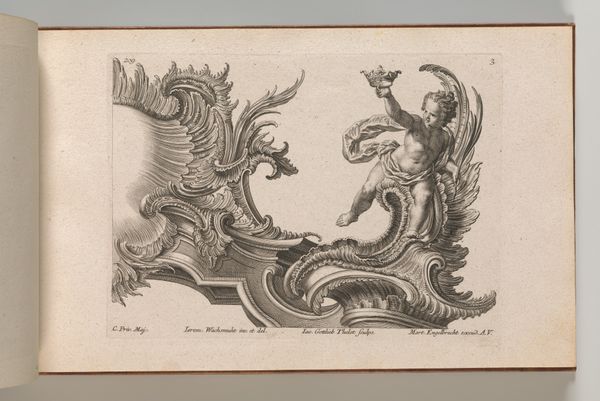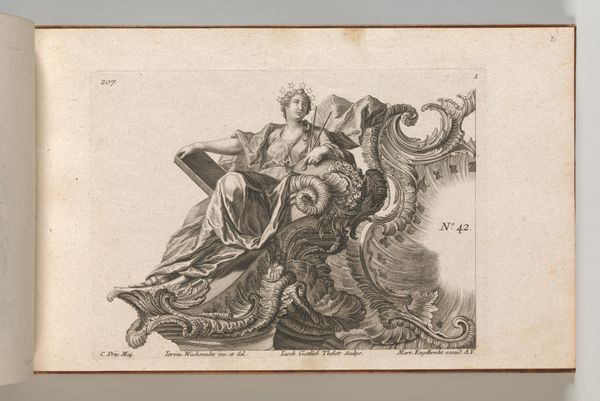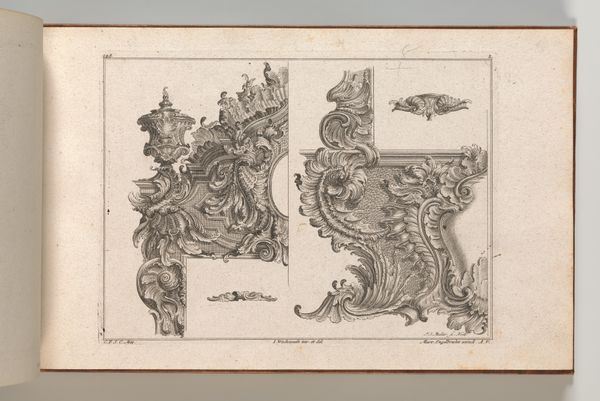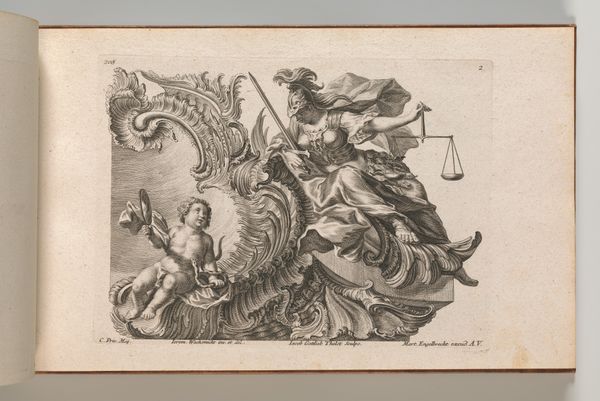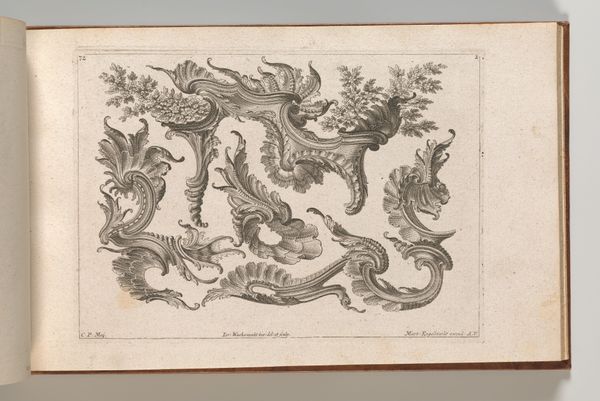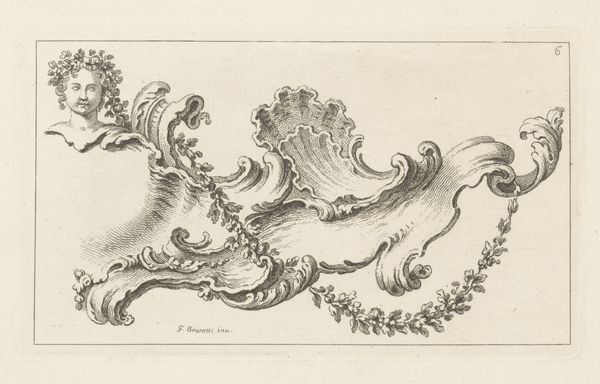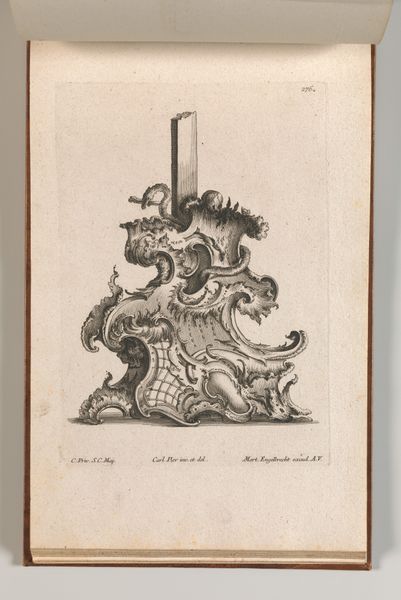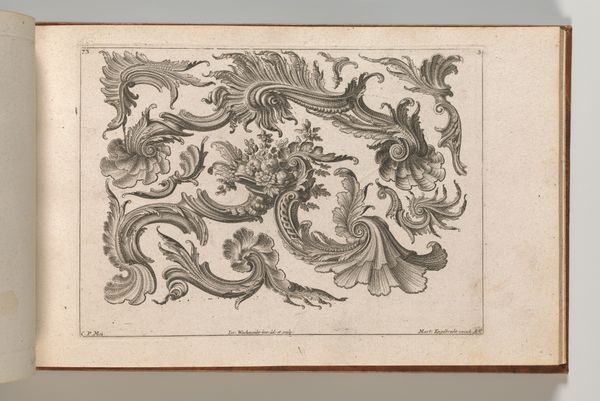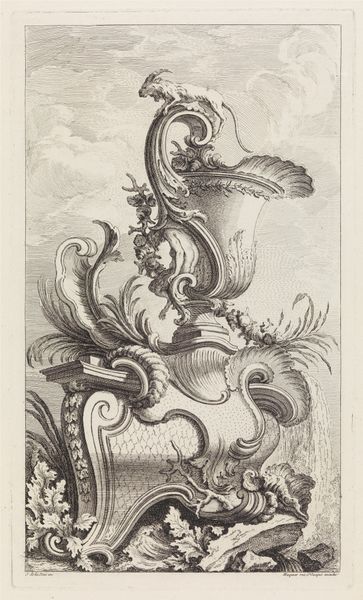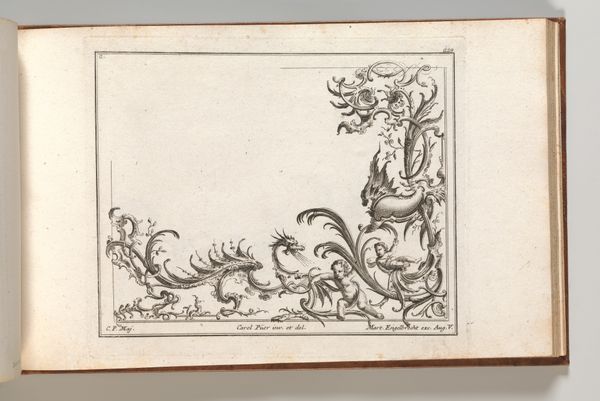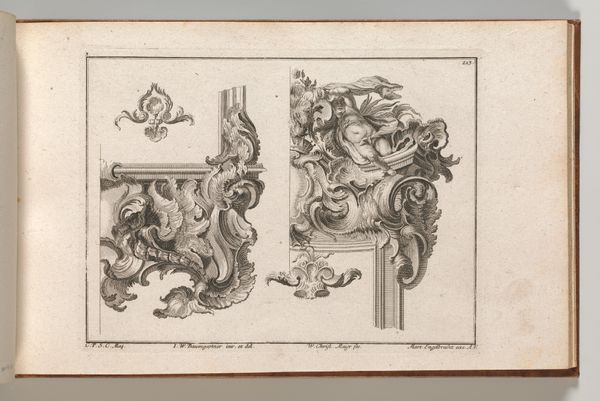
Design for a Rocaille Cartouche with the Figure of Putto holding up a Cup, Plate 4 from an untitled series with architectural cartouches and allegorical figures 1745 - 1755
0:00
0:00
drawing, print, engraving
#
drawing
#
allegory
# print
#
figuration
#
engraving
#
rococo
Dimensions: Overall: 8 7/16 × 13 3/4 in. (21.5 × 35 cm)
Copyright: Public Domain
Curator: Oh, look at this one! It practically shimmers, doesn’t it? Like catching sunlight on a baroque wave. Editor: Literally so. This engraving, probably from around 1745-1755, is Jacob Gottlieb Thelot’s "Design for a Rocaille Cartouche with the Figure of Putto holding up a Cup." I can almost smell the paper it’s printed on. The process really highlights how ornament becomes intrinsically linked to ideas of prestige, craftsmanship, and…consumption, really. Curator: Consumption, yes! The cartouche frames an absence, an emptiness begging to be filled. The little cherub, he offers us a taste… of what, exactly? Power? Beauty? Excess? He's positively radiant! And there is something playful about it. Editor: It is playful! Look how those rocaille motifs – shells, leaves, that asymmetry – dominate. Each curl is painstakingly rendered through engraving. Every line had to be intentionally placed, then etched to catch ink. Imagine the sheer labor to make this kind of design available! We so often forget to see what the maker *put in*. Curator: Absolutely. All this intense labor just so someone else can dream up an extravagant mirror frame or a showy crest above their door! But isn't that the delicious irony? The design is to amplify the experience, to deepen it. And here it all lives only as black lines, existing for it own pure, formal sake! Editor: And it’s deceptive, really. We have all this intricacy made accessible with these reproduction methods. It becomes a visual language, speaking directly of wealth without directly being so! Curator: Right. That cup the cherub holds suddenly transforms. It's no longer a cup for a God but for a Gilded Age entrepreneur. The sweetness becomes laced with the tang of capitalism. So complicated this confectionary cherub of Thelot's! Editor: Well, it makes me wonder, what other material processes of the 18th century do we take for granted? How were the pigments ground? Where was the paper made? Thinking materially opens new historical possibilities and insights to our collective consumption! Curator: Oh, I like how that grounds it, brings us back down from the ethereal heights! Now I wonder who might have seen this print originally...
Comments
No comments
Be the first to comment and join the conversation on the ultimate creative platform.
